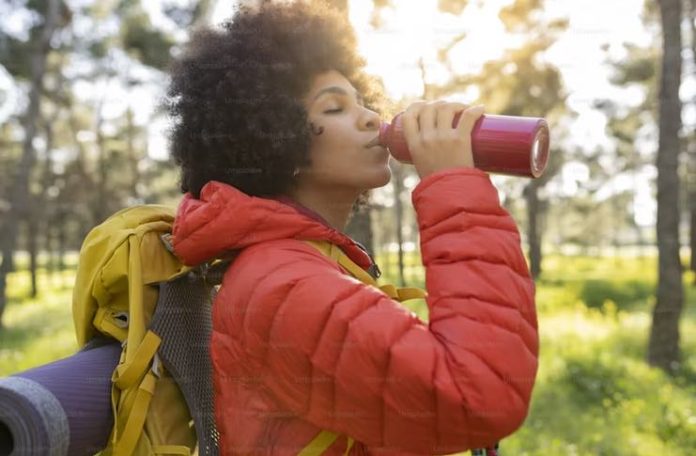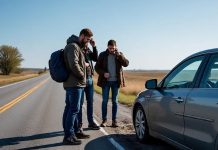
As global temperatures rise and heat waves become more frequent, ensuring safety from heat-related illnesses while traveling is paramount. According to recent data, there has been a concerning increase in heat-related incidents among travelers, highlighting the urgent need for preventative measures. Moreover, heat-related fatalities have surged to their highest levels in years, with over 1,670 deaths recorded nationwide in 2022 alone.
Watch this news clip to get a glimpse:
To safeguard against heat-related illnesses during travel, it is crucial to understand the various types of ailments that can arise from prolonged exposure to high temperatures. These include heat rash, fainting, heat exhaustion, and the most severe form, heat stroke, where the body loses its ability to regulate temperature effectively. So without further ado, as part of our Travel advice and tips section, we’ll delve into how to prevent heat-related illnesses when traveling.
Assessing Travel-Related Heat Risks
Travelers venturing into unfamiliar environments or engaging in outdoor activities are particularly susceptible to heat-related risks. Factors such as prolonged sun exposure, physical exertion, and inadequate hydration can elevate these risks significantly. It’s crucial for travelers to assess potential hazards and take proactive measures to safeguard their well-being.
While embarking on a hiking expedition in Southeast Asia, I learned to assess travel-related risks associated with extreme heat and humidity. The combination of high temperatures and strenuous physical activity heightened the risk of heat exhaustion, prompting me to prioritize hydration, seek shaded rest stops, and adjust my pace to avoid overexertion.
Implementing Prevention Strategies
Effective prevention strategies play a pivotal role in mitigating heat-related risks during travel. Access to clean drinking water, seeking shade whenever possible, and pacing physical activities are key preventive measures that travelers should prioritize. Travel organizers should also incorporate comprehensive training and education programs to equip travelers with the necessary knowledge and resources to address heat-related challenges.
Incorporating preventive strategies into my travel routines has been instrumental in mitigating heat-related risks. Whether exploring bustling city streets or remote wilderness areas, I always carry a reusable water bottle and sunscreen to stay hydrated and protected from harmful UV rays. Additionally, taking regular breaks in shaded areas and wearing lightweight, breathable clothing help regulate body temperature and minimize the risk of heat-related ailments.
To prevent heat-related risks and enjoy your trip, you should take the following steps before and during your travel:
- Plan ahead: Research the climate and weather conditions of your destination, and pack appropriate clothing and accessories, such as hats, sunglasses, sunscreen, and water bottles. Check the local health advisories and warnings, and consult your doctor if you have any medical concerns or need any vaccinations or prescriptions.
- Stay cool: Seek shade or air-conditioned places as much as possible, and avoid being outdoors during the hottest hours of the day. Use fans, wet towels, or cool showers to lower your body temperature if needed. Avoid using stoves, ovens, or other heat-generating appliances in your accommodation.
- Stay hydrated: Drink plenty of fluids, preferably water or sports drinks, even if you are not thirsty. Avoid alcohol, caffeine, and sugary drinks, as they can dehydrate you and interfere with your body’s cooling mechanism. Replenish your electrolytes with fruits, vegetables, or oral rehydration solutions if you sweat a lot or have diarrhea.
- Stay active: Exercise moderately and gradually, and adjust your pace and intensity according to the temperature and your fitness level. Take frequent breaks and rest in shady or cool areas. Wear lightweight, loose-fitting, and breathable clothing, and apply sunscreen regularly. Monitor your heart rate, breathing, and body temperature, and stop immediately if you feel dizzy, nauseous, or weak.
- Stay informed: Watch out for signs and symptoms of heat-related illnesses, such as headache, fatigue, muscle cramps, confusion, fainting, or seizures. Seek medical attention immediately if you or someone else experiences any of these. Learn how to recognize and treat heat-related illnesses, and carry a first-aid kit with you. Keep in touch with your family, friends, or travel companions, and let them know your itinerary and whereabouts.
By following these tips, you can reduce your risk of heat-related illnesses and enjoy your travel experience. Remember to listen to your body, and don’t let the heat spoil your fun.
Prioritizing Training and Education
Investing in training and education initiatives is essential to empower travelers with the skills and information needed to navigate heat-related risks effectively. Providing travelers with insights into recognizing early warning signs of heat-related illnesses and establishing protocols for responding to emergencies are critical components of these initiatives.
Through immersive travel experiences, I’ve come to appreciate the value of comprehensive training and education in addressing heat-related challenges. Participating in wilderness survival courses and first-aid training programs has equipped me with valuable insights into recognizing heat-related symptoms and implementing effective response protocols in emergency situations. I suggest you do the same.
Watch this for some more tips:
Seeking Immediate Medical Attention
In the event of a heat-related incident, travelers should prioritize seeking immediate medical attention to ensure timely intervention and treatment. Prompt response can significantly mitigate the severity of heat-related illnesses and prevent further complications.
During a hiking excursion in the Rocky Mountains, a fellow traveler experienced symptoms of heat exhaustion, prompting us to immediately seek assistance from park rangers. The swift response and professional care provided underscored the importance of prioritizing health and safety during travel.
Exploring Legal Options
Travelers who experience heat-related incidents due to negligence or inadequate safety measures may explore legal options to seek compensation for damages incurred. Consulting with legal professionals specializing in personal injury cases can help travelers understand their rights and pursue appropriate recourse. For example, if you’ve bveen traveling in Colorado, and you’ve been injured due to the heat because of negligence in a tourist attraction or hotel, you should get in touch with an experienced personal injury lawyer in Westminster, Colorado to explore your rights.
While I haven’t personally encountered heat-related incidents due to negligence, I recognize the importance of understanding legal options available to travelers in such circumstances. Through discussions with legal experts and fellow travelers, I’ve gained insights into the complexities of personal injury cases and the significance of seeking appropriate recourse to address damages incurred during travel.
Conclusion: Embracing Safe Travel Practices
In conclusion, prioritizing safety measures and adopting proactive approaches are paramount in safeguarding against heat-related illnesses during travel. By understanding the risks, implementing preventive strategies, and prioritizing training and education, travelers can navigate potential hazards with confidence and ensure a safe and enjoyable travel experience for all.









